
University of Florida students know the Plaza of the Americas as a social space for studying, organizational recruitment, special events, free food, and generally a space to hangout. Historically, the Plaza has been the main space at UF where students could gather, create dialogue, and foster a sense of community. Using the Plaza as a platform, students facilitated social change at the University and beyond. It continues to be a space for students to be dynamically involved in campus life.
When the University of the State of Florida in Gainesville first held classes in 1906, there was no quadrangle, no Plaza of the Americas. There was barely a university and it existed solely for white men. The isolated campus stood on the outskirts of the city, connected only by dirt roads. What would become the Plaza was a patch of pine trees too buggy and hot for much use beyond ROTC military drills and the College of Agriculture’s cattle.
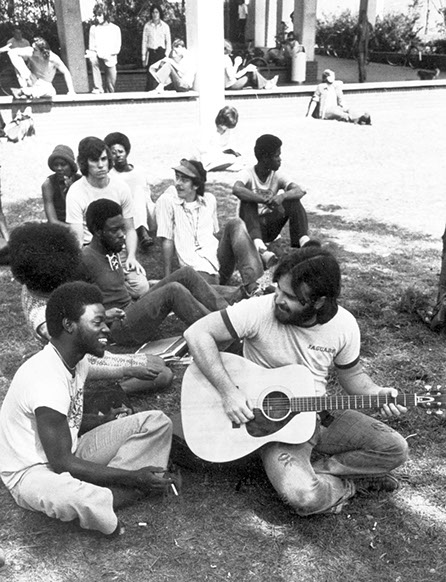
University of Florida student plays guitar while
students listen on the Plaza of the Americas, 1970s
University Archives Photograph Collection,
University Archives, Special & Area Studies Collections
Perhaps a catalyst for the 1925 Olmsted redesign was University President John J. Tigert’s intent for the University to promote the "Good Neighbor" policies of U.S. Presidents Roosevelt and Hoover. Tigert recognized that the University’s proximity to Cuba and other Latin American countries could be beneficial to diplomatic relations. In 1931, The Plaza was officially named and dedicated to the new Institute for Inter-American Affairs, now known as the Center for Latin American Studies, with the planting of 21 live oaks. Many of the oaks remain today, aside from Canada and the U.S., which stood where Library West does now.
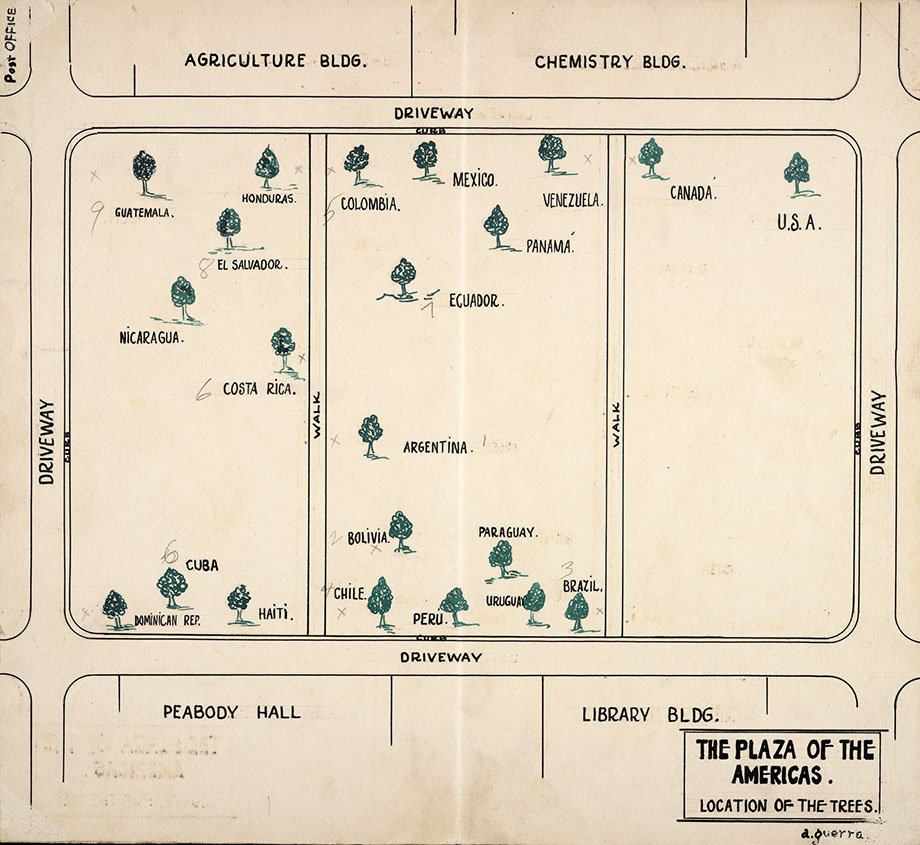
A. Guerra
Landscape Drawing of the Plaza of the Americas with Tree Placement, 1931
University Archives, Special & Area Studies Collections
Civil Rights
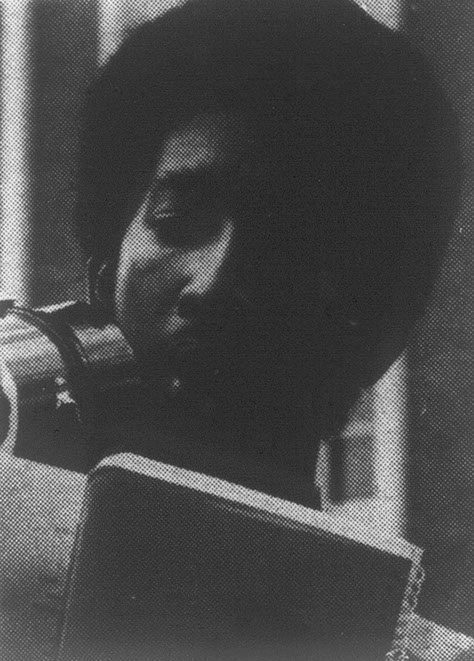
The decades-long fight for desegregating the University of Florida culminated in an intense legal battle. Though Black students officially enrolled in 1958, discrimination and racism was prevalent at the University. In the years that followed, students organized demonstrations and rallies throughout campus, including the Plaza, to speak out against the injustices.
Following the Black Thursday sit-in on April 15, 1971, UF students continued to rally against the unjust arrests of 66 Black students at President Stephen C. O’Connell’s behest. Kip Smith and Steve Uhlfelder, Secretary of Minority Affairs and President of Student Government, presented speeches and a petition on the Plaza calling for the immediate resignation of President O’Connell. This rally preceded the march to O’Connell’s house, where he refused to speak on the matter. The students continued to protest the next day, producing a mock burial of an effigy of O’Connell on the Plaza in front of Library West. University administration eventually reacted and established the Institute of Black Culture in the fall of 1971.
Ron Sachs and Ken McKinnon
Kip Smith Giving Speech on the Plaza
April 16, 1971
The Florida Alligator
University Archives, Special & Area Studies Collections
Coeducation
Since 1924, white women were allowed to enroll at UF for programs not offered at the women’s college (Florida State University). However, true coeducation on campus did not begin until 1947. Though white women gained access to UF campus as “coeds,” they experienced restricted participation due to strict dress codes. In outdoor spaces, such as the Plaza, sitting on the lawn was a challenge when wearing full-length skirts. However, after petitioning to be referred as “students” instead of “coeds,” along with evolving fashion, white women gained ground in their quest for equality.
Class or discussion outside on the Plaza of the Americas on the University of Florida Campus, 1960s
University Archives Photograph Collection,
University Archives, Special & Area Studies Collections
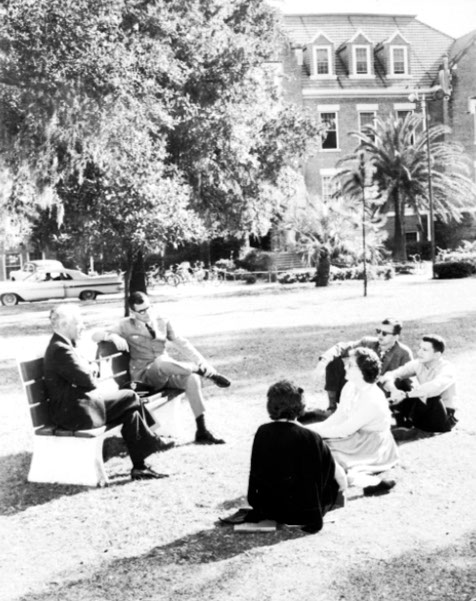
Social Action
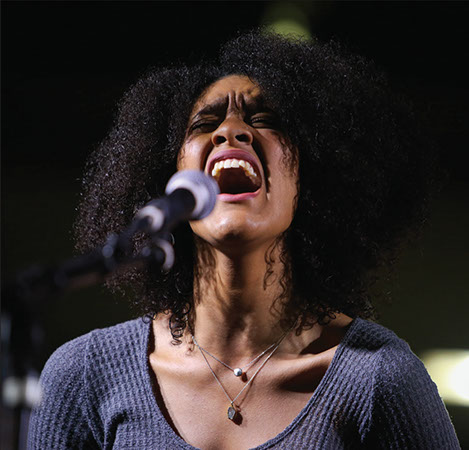
From the Vietnam War to gun reform, the Plaza has been a space to advocate for change. Whether students were attempting to communicate with administration about issues specific to UF or gathering to show solidarity with nationwide social and political movements, the Plaza of the Americas became an integral space for student-led action.
Mary Kenney sings “Pretty Hurts” and “Have Mercy” on the Plaza of the Americas During the Take Back the Night March and Rally to End Sexual Violence
April 6, 2018
Photo by Emma Green
The Independent Florida Alligator
University of Florida Digital Collections
Fliers, banners, signs, and tables regularly line the pathways. Functioning as a free speech zone, individual students and groups continue to utilize the Plaza as a place to be heard, learn, and challenge perspectives, circulate ideas, and foster a dialogue on social, political, and religious matters.
Don’t Ask Don’t Tell Rally on the Plaza of the Americas
September 21, 2011
Photo by Felipe DeAndrade
The Independent Florida Alligator
University of Florida Digital Collections
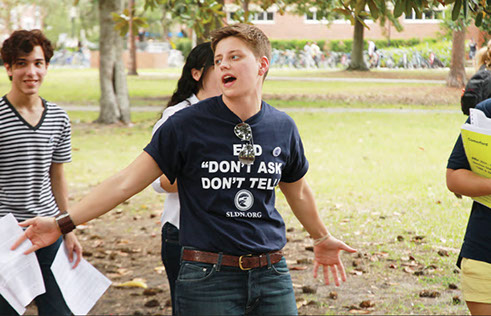
Future
Though it has changed over time, the Plaza of the Americas remains an important space for student congregation and communication. Through organized events, the Plaza serves as a space for community building and healing.
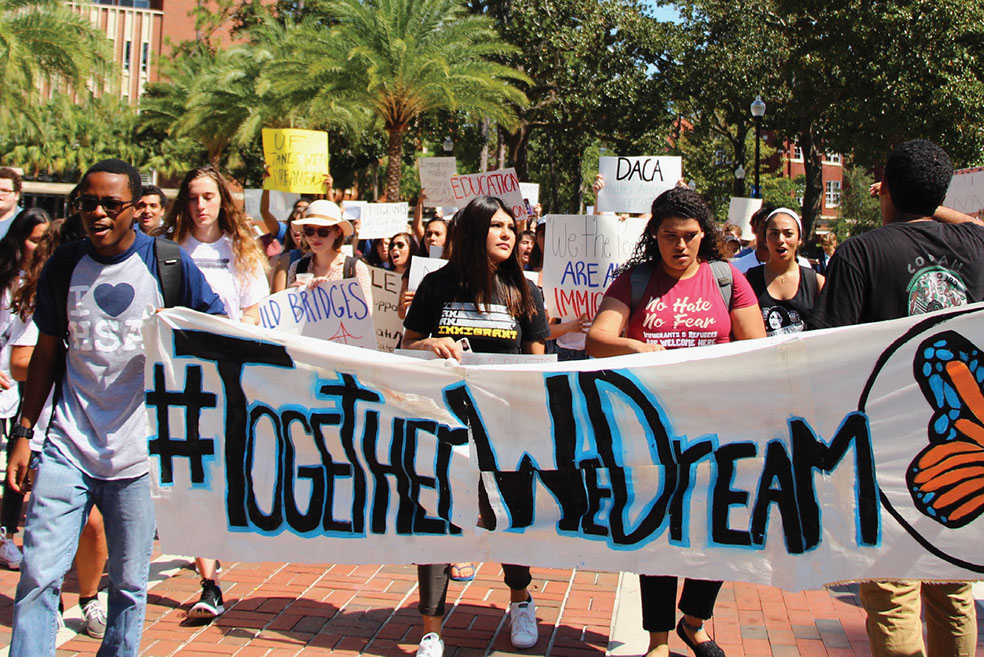
More than 100 Students March Across UF to Support Deferred Action for Childhood Arrivals (DACA), September 29, 2017
Photo by Alan Alvarez, The Independent Florida Alligator
University of Florida Digital Collections
How many unorganized and unrecognized moments happen in this space every day?
What effect do those moments have on our community?
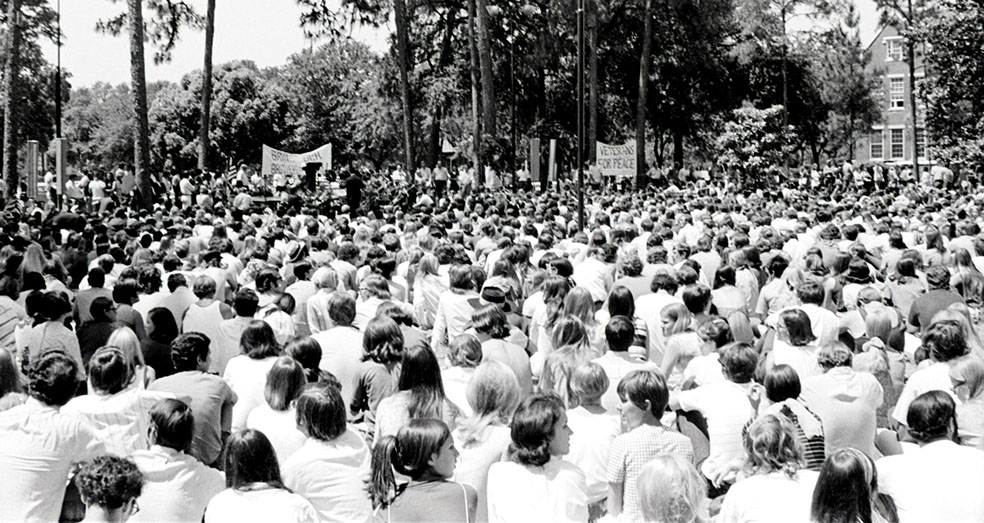
Photographs from Vietnam War Protest on the Plaza of the Americas, 1972
University Archives, Special & Area Studies Collections
This exhibit was developed spring 2019 as part of the graduate Exhibitions Seminar in Museum Studies taught by Lourdes Santamaría-Wheeler. It was driven by student inquiry and has been an experiment in collaborative exhibition development processes.
Curated by Georgia Fasano, Marygrace Kennedy, Mara Reynolds, Brie Rosenbloom, and Chandler A. Sandy with assistance from Elizabeth A. Bouton
Designed by Elizabeth A. Bouton
Unless otherwise noted, all items are from Special & Area Studies Collections, George A. Smathers Libraries, University of Florida.